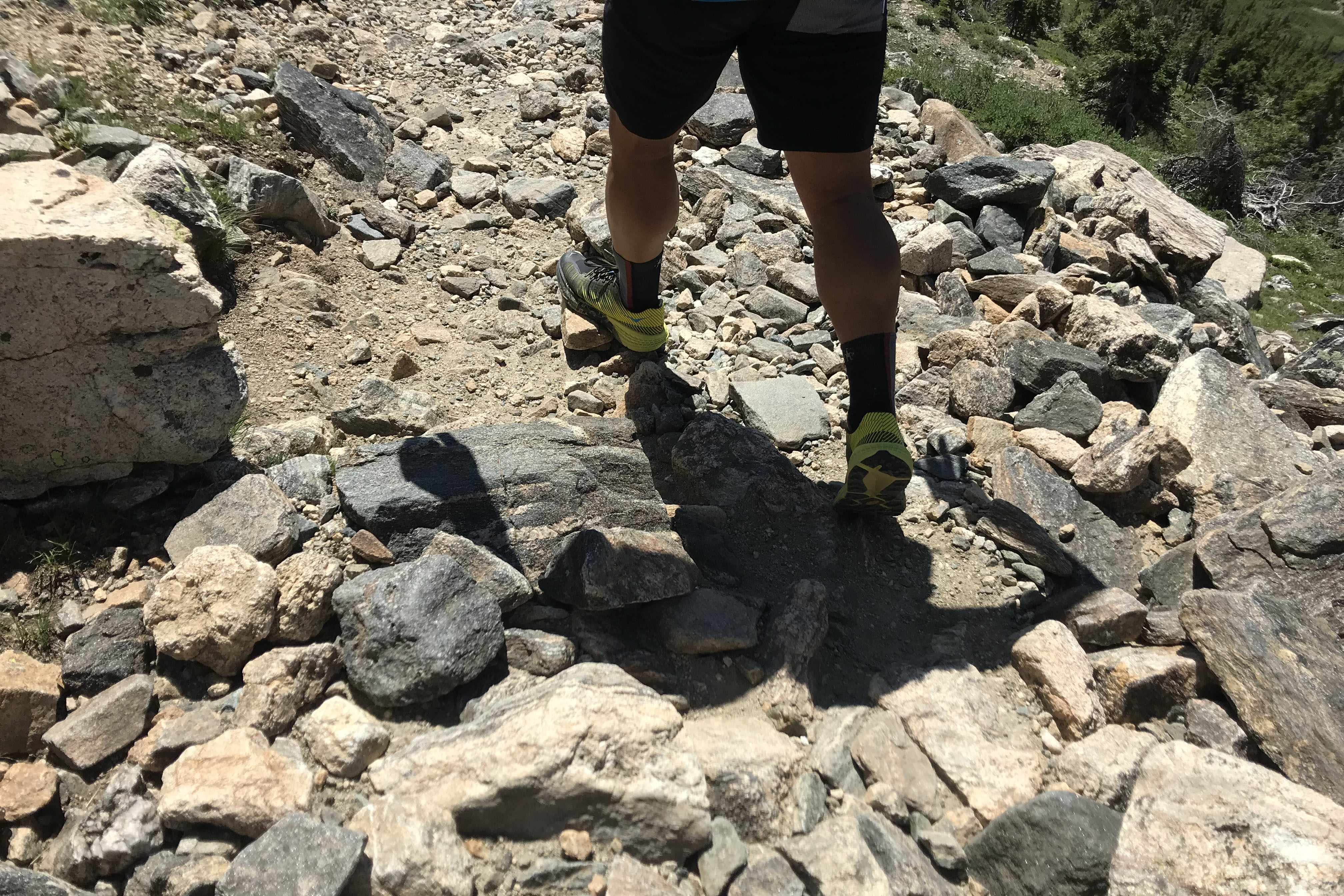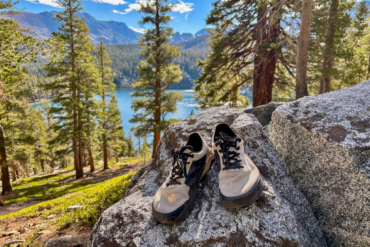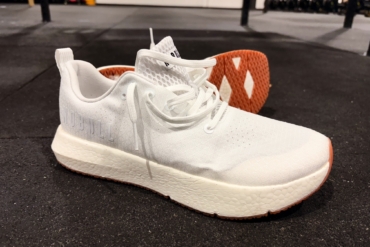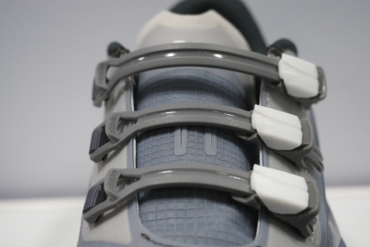If you know and love the venerable HOKA ONE ONE Speedgoat, the EVO Speedgoat should be on your radar for your next trail-running shoe purchase.
The HOKA ONE ONE Speedgoat is a beloved trail-running shoe for those who value lots of foot protection and great traction. The EVO model will be the fourth iteration of the Speedgoat and the model’s fastest yet.
I joined HOKA athlete Sage Canady and a few writers on a run this week to test out the EVO Speedgoat ($160) on a rough mountain trail. These are my first impressions of the shoe.
In short: The HOKA ONE ONE EVO Speedgoat is a near replica of the Speedgoat 3 with a few minor improvements. Most notably, it weighs 11 g less, uses a gusseted tongue, and has tougher material in the upper that should make the shoe both faster and more durable.
HOKA EVO Speedgoat Review
Launching out of the Fourth of July Trailhead in the Indian Peaks Wilderness, the EVO Speedgoat proved its excellent traction from the get-go.
The Arapaho Pass Trail climbs steeply from the parking lot of the Fourth of July Trail as it darts into a shady forest with a mix of rocks and hardpack dirt trail. A few waterfalls cross the trail as it climbs steadily from about 8,000 feet, breaks through treeline, and eventually tops out around 12,000 feet a few miles later.
As we ran uphill at a modest pace, the EVO Speedgoat impressed me with its traction. This came as no surprise, as the EVO Speedgoat rocks a luggy Vibram Megagrip outsole that has proven itself in countless environments around the world.
A Tall, Cushy Ride
Much like the Speedgoat 3, the EVO Speedgoat has a lot of cushioning. With a stack height of 30-26 mm heel to toe, you are positioned pretty high off the surface of the ground.
This stack height is a little bit too much for me on a trail as rocky and technical as the one we ran, but the shoe still performed well. It provides reasonable proprioception for such a thick stack height, and I didn’t get roll my ankle even when navigating lots of loose rocks at a good downhill clip. Another writer did experience an ankle roll but was not injured.

And while most runners have a preference about the amount of cushion in their shoes and when to use more precise, low-stack shoes, this one certainly fills a niche. When you want a protective shoe for running big miles on less technical terrain, this one should hit the nail on the head.
EVO Speedgoat Upgrades
HOKA touts the EVO Speedgoat as a race-ready version of the Speedgoat. It’s negligibly lighter (11 g, less than half an ounce), and the upper material seems to be slightly less stretchy. And the brand claims the upper is more durable.
It uses “Matryx upper textile.” That means the upper has high-tensile synthetic fiber strands across the midfoot for strength and durability at a minimal weight. It also adds a gusseted tongue to prevent migration across the instep.
In my brief experience, all these things worked as promised. But I was left thinking, “Why would you buy the normal Speedgoat 3?”
The answer seems to be simply the cost. The EVO Speedgoat costs $160, and the Speedgoat 3 is $140.
But if you don’t mind spending an extra $20, the EVO Speedgoat is lighter and likely more durable. If you are already a Speedgoat lover, it seems like a logical expenditure for a good shoe. It will likely fill a big-mile niche in my quiver for the coming year.











